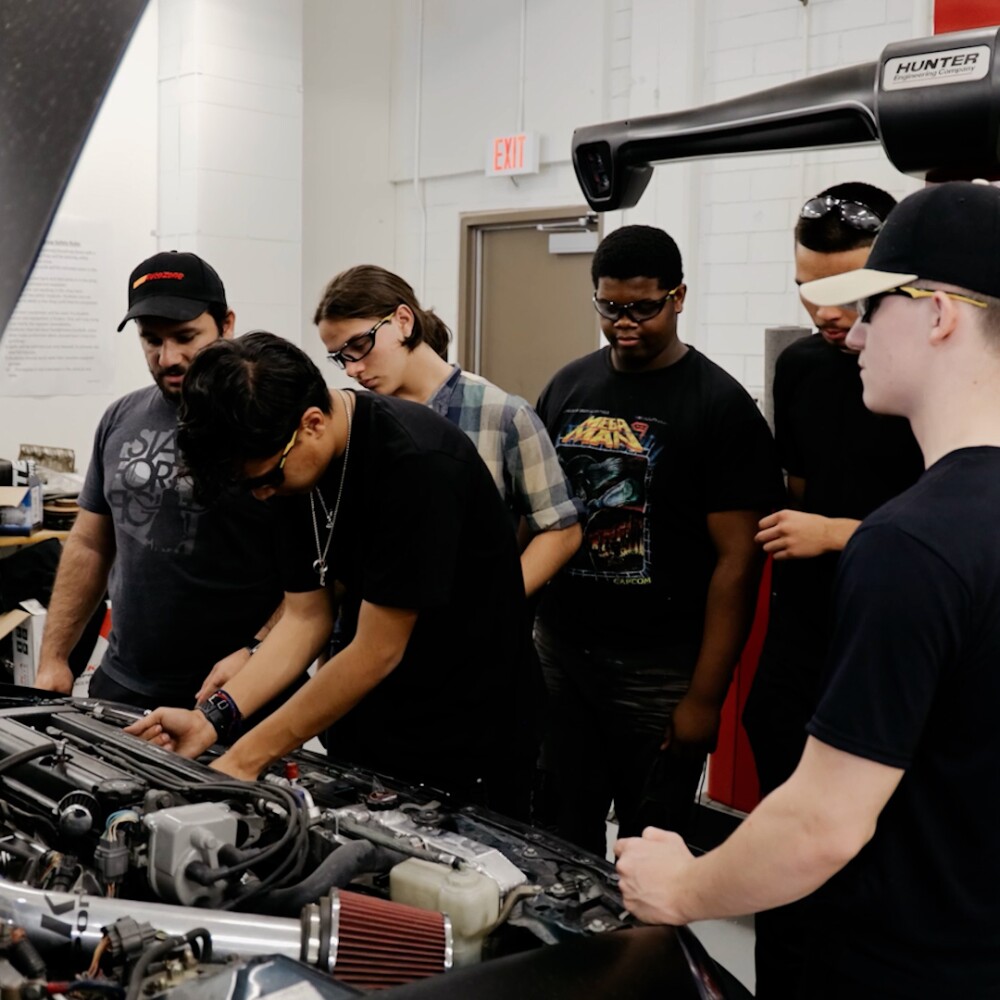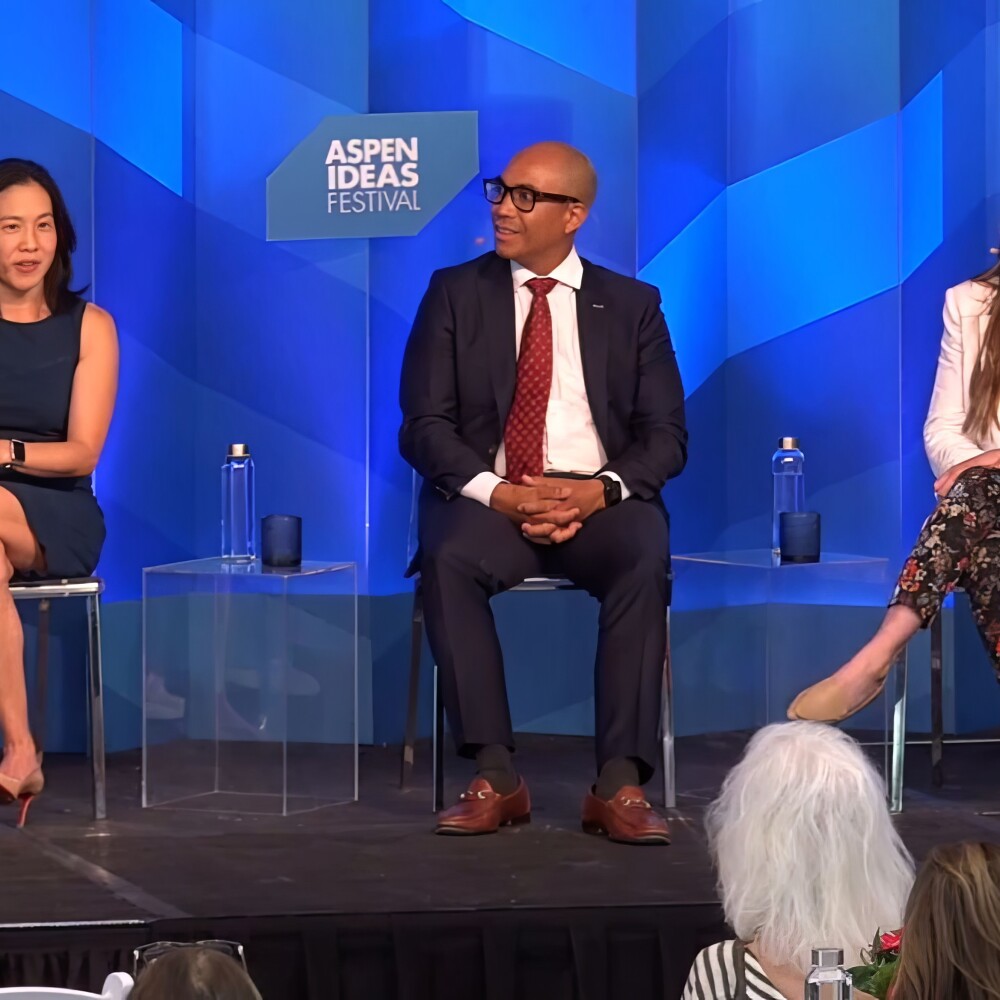Walking the “living campuses” of Environmental Charter Schools any given weekday is a natural wonder to behold.
The four schools serve over 1,400 middle and high school students. Chicken coops and pollinator gardens intersect with peaceful creeks. Vegetables grow in raised garden beds. Outdoor classrooms buzz with excitement as students discuss environmental justice initiatives they are leading in their community or their next class trip to the mountains.
The schools aren’t rural, or even suburban, but right in the heart of Los Angeles, serving the communities of Inglewood, Gardena and Lawndale.
Known for its rich Latino and Black heritage, South L.A. is also economically-disadvantaged. Other local district school systems strain under the weight of post-pandemic attendance issues, lagging state test scores and a growing population of English Language Learners.
The premise of ECS – founded two decades ago – is simple, yet profound. If you build campuses like they have always been built, students will graduate solving problems that have always been solved. If you build ones valuing sustainability, community and innovation, then students will begin to imagine new possibilities.
Superintendent Farnaz Golshani Flechner points to the schools' 94% attendance rate as evidence. “We’ve built a sense of connection and community among our students. They have pride and take ownership of their school. It’s a place they want to be,” she says. The school now ranks in the top 2% of high schools nationwide, according to U.S. News and World Report.
Yet as the schools have grown in popularity, ECS has struggled to keep up with community demand for school seats. A few years ago, “Only 25% of our middle school students had a chance of getting into our high school program,” she says of their growing pains. Property availability and cost in pricey L.A. have made expansion challenging.
When Golshani-Flechner and her team finally found a location that would work to expand, "We couldn’t let our families down.” ECS turned to Equitable Facilities Fund to support the purchase.
The nonprofit social impact fund was explicitly created to level the playing field for excellent public charter schools. Often times, these schools are the best educational option in low-income communities of color. Yet they receive inequitable access to quality school facilities and funding. EFF provides schools with long-term, affordable financing. The money saved on interest payments is directed back into classrooms. It also offers technical support for school leaders unfamiliar with the intricacies of real estate and finance.
The fund is supported by the Walton Family Foundation’s Building Equity Initiative, an unprecedented effort to make it easier and more affordable for public charter schools to access equitable facilities funding. EFF recently surpassed $1 billion in loans, which now support 156 public school campuses in 19 states. All told, $250 million in savings has so far been passed along to schools.
Equitable Facilities Fund supported a nearly $30 million loan to ECS. The funds allowed the school to acquire and renovate a previously-leased high school facility and refinance two existing loans, one for each middle school.
“With EFF, it feels like you are working with an advocate who understands the impact of your schools and believes in your mission. The lower cost financing through EFF has allowed us to continue our model of education in a meaningful way.”
The savings on interest payments has translated into the hiring of more counselors and special education teachers, more funding for outdoor education trips and upkeep of the U.S. Department of Education’s first “green ribbon” school campus.
It’s an education formula that parents have embraced. “Frequently their kids are not thriving in the district schools” Golshani-Flechner says. “They want a different experience for them.”
Families also understand the importance of an environmental education, she says. They live its impacts every day.
“It’s not hard to observe that environmental issues are more prevalent in low-income communities. Environmental justice and social justice are entirely linked. It’s critical for our student body to develop a sense of ownership of the community around them and their world.”
To flex their advocacy muscles, the schools run a “Green Ambassador” program. It provides service-learning that empowers young people to be agents of change and to take action locally on critical environmental issues.
These include water sustainability and quality, open space conservation, food sovereignty and exposure to toxic substances like pesticides. Once a year, student groups also “Hike the Hill” in Washington, D.C., talking to their representatives about issues like access to public land, environmental education, youth engagement and green jobs.
Closer to home, Golshani-Flechner observes that school priorities are becoming a point of neighborhood pride.
“20 years ago, our students brought home peach trees to plant in their yards. A former student came by with a pie for us the other day. She told us that the tree has become the center of her block. Every year, her neighbors and their kids gather and pick the peaches, and they still think of us.”




